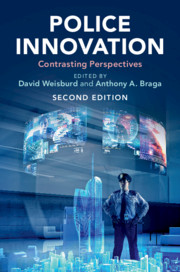Book contents
- Police Innovation
- Police Innovation
- Copyright page
- Contents
- Figures
- Tables
- Notes on Contributors
- Introduction
- Part I Community Policing
- Part II Procedural Justice Policing
- Part III Broken Windows Policing
- 5 Advocate
- 6 Critic
- Part IV Problem–Oriented Policing
- Part V Pulling Levers (Focused Deterrence) Policing
- Part VI Third–Party Policing
- Part VII Hot Spots Policing
- Part VIII Predictive Policing
- Part IX CompStat
- Part X Evidence-Based/ Risk-Focused Policing
- Part XI Technology Policing
- Index
- References
6 - Critic
Incivilities Reduction Policing, Zero Tolerance, and the Retreat from Coproduction: Even Weaker Foundations and Stronger Pressures
from Part III - Broken Windows Policing
Published online by Cambridge University Press: 09 August 2019
- Police Innovation
- Police Innovation
- Copyright page
- Contents
- Figures
- Tables
- Notes on Contributors
- Introduction
- Part I Community Policing
- Part II Procedural Justice Policing
- Part III Broken Windows Policing
- 5 Advocate
- 6 Critic
- Part IV Problem–Oriented Policing
- Part V Pulling Levers (Focused Deterrence) Policing
- Part VI Third–Party Policing
- Part VII Hot Spots Policing
- Part VIII Predictive Policing
- Part IX CompStat
- Part X Evidence-Based/ Risk-Focused Policing
- Part XI Technology Policing
- Index
- References
Summary
A 2002 New Yorker cartoon depicts two grizzled prisoners whiling away the day on their bunks in their cell. The one on the bottom bunk, presumably in reply to a question from the inmate in the top bunk, explains, “There might have been some carelessness on my part, but it was mostly just good police work.” The inmate on the top bunk seems startled by the admission.
- Type
- Chapter
- Information
- Police InnovationContrasting Perspectives, pp. 142 - 162Publisher: Cambridge University PressPrint publication year: 2019



